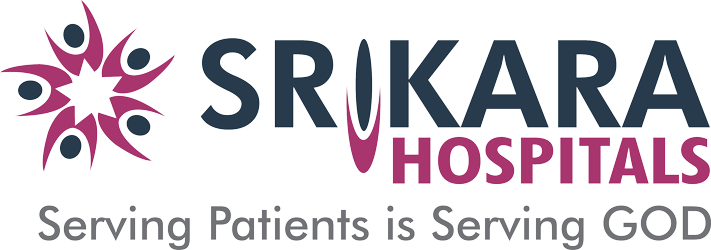Department of Pulmonology
Srikara Hospitals offers a team approach focused on wellness, early diagnosis, and expedited treatment for respiratory conditions. Our team includes specialists in pulmonary medicine, sleep medicine, critical care, thoracic surgery, oncology, and respiratory therapy – working together with the latest technology to expedite diagnosis and treatment.
What is pulmonology?
Pulmonology is the study of the pulmonary system and its associated organs. It is a subspecialty of internal medicine that focuses on diseases of the respiratory system, specifically the lungs and the pulmonary circulation, bronchial tubes, upper respiratory tract (nose, pharynx, and throat), and heart.
What is a pulmonologist and what do they do?
Pulmonologists are specially trained in diseases of the respiratory system (chest), such as chronic asthma, chronic bronchitis, mesothelioma, pneumonia, tuberculosis, COPD (chronic obstructive pulmonary disease), emphysema, and AIDS-related pulmonary complications, and complicated chest infections. A pulmonologist cares for patients with complex pulmonary problems that may not be managed by a general internist. They often function as critical care physicians.
Pulmonologists typically evaluate patients before major surgeries, which thoracic surgeons typically perform. However, pulmonologists perform specialized surgical procedures, such as lung biopsies, bronchoscopy, intubation, and cricothyrotomy.
A pulmonologist completes medical school and at least three years of post-graduate training in internal medicine, followed by 2-3 years of pulmonology and critical care fellowship training.
How does a pulmonologist treat patients?
A pulmonologist diagnoses diseases of the respiratory system by asking patients questions about hereditary diseases, exposure to toxins (asbestos, second-hand smoke), and exposure to infectious agents or a possible predisposition to autoimmune diseases. A pulmonologist inspects patients’ hands for cyanosis or clubbing, respiratory rates, chest wall movement, and breathing sounds.
Other tools pulmonologists use include:
- Blood tests, such as arterial blood gas measurements
- Chest X-rays
- CT scans
- Scintigraphy – A nuclear medicine imaging technique that produces two-dimensional images of tissue, captured by a scintillation camera
- Spirometry – A common Pulmonary Function Test (PFT) that measures lung function
- Nasal epithelial brushing – A test commonly used for determining cystic fibrosis in infants
- Positron emission tomography (PET) – A nuclear medicine imaging technique that produces a three-dimensional image of functional processes in the body
- Pulmonary angiography(CT Angio)-To diagnose abnormalities such as pulmonary embolism
Bronchoscopy-to directly visualize the airways and lungs
What conditions does a pulmonologist treat?
- Asthma -A combination of an inflammatory and spastic disease of the airways.
- COPD – Chronic obstructive pulmonary disease
Emphysema
Empyema – A collection of pus in the space between the lung and chest wall - Hemoptysis – Coughing up blood or bloody phlegm
- Hemothorax – A collection of blood in the space between the lung and chest wall
- Lobar collapse – A collapse of part or all of the lung
- Mesothelioma – Lung cancer commonly caused by asbestos contamination
- Pneumothorax – A collection of air in the pleural cavity of the chest between the lung and the chest wall
- Pulmonary edema – Abnormal buildup of fluid in the lungs
- Pulmonary embolism – Blockage in the main artery of the lung
- Tuberculosis – A contagious bacterial infection of the lung
